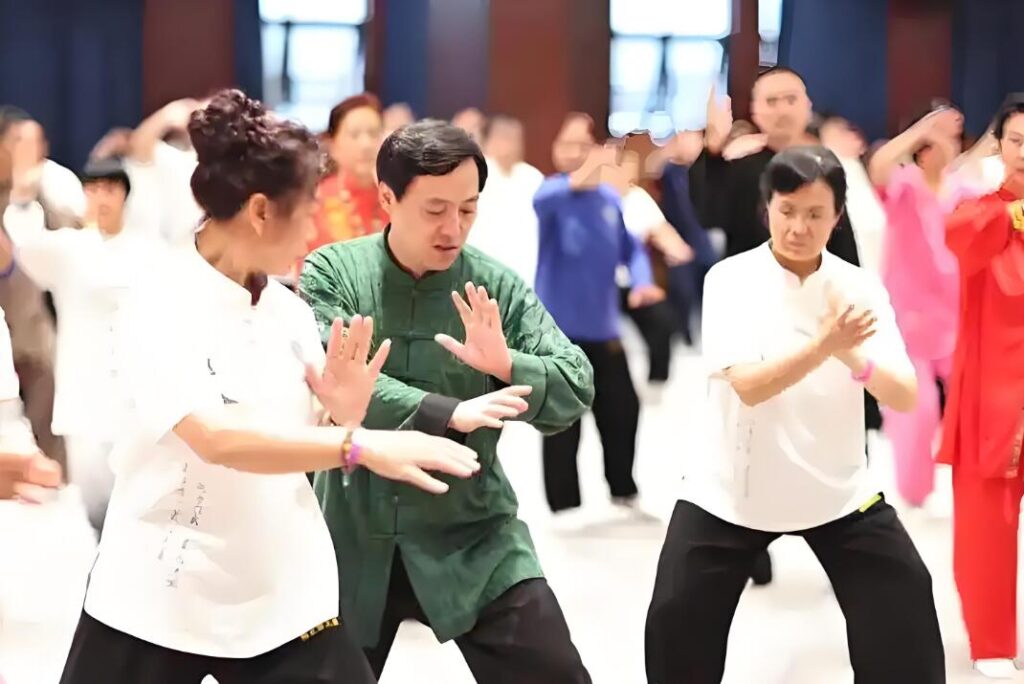
Regular practice of Tai Chi is a very good health habit. It can enhance our resistance and prevent diseases. Regular practice of Tai Chi is also very helpful for lowering blood sugar.
The performance of Tai Chi in lowering blood sugar
(I) Analysis of the internal factors of Tai Chi exercise in lowering blood sugar
It shows that Tai Chi can directly lower blood sugar. Tai Chi exercise has moderate intensity and combines hardness and softness. It can accelerate the absorption and transport of glucose through regular muscle relaxation and contraction. At the same time, Tai Chi exercise intervention in lowering blood sugar increases insulin sensitivity to a certain extent. Insulin sensitivity plays a leading role in the pathogenesis of type 2 diabetes. Improving insulin sensitivity is a new idea for multiple blood sugar lowering therapies. Tai Chi emphasizes the high coordination of consciousness, movement and breathing. By training the subjects to relax their body and mind during practice, abdominal reverse breathing combined with soothing arc movements can effectively improve insulin sensitivity and lower blood sugar.
(II) Analysis of changes in blood pressure in Tai Chi in reducing blood sugar
After Tai Chi in reducing blood sugar experiment, blood pressure showed different degrees of decline. The reason is that on the one hand, it is mentioned in Tai Chi theory that “calm the mind and use the intention”. The human body functions are regulated and balanced by nerves and body fluids. During the Tai Chi, the mind is highly concentrated, which strengthens the balance of excitement and inhibition of the cerebral cortex and improves the connection between the cerebral cortex and various functional areas. Hypertension and diabetes are both visceral diseases of the cerebral cortex. The improvement of the balance of the central nervous system reduces blood pressure, and also affects the metabolism of sugar, protein and fat, so that blood sugar tends to normal. On the other hand, the characteristics of Tai Chi movements, “round and light”, make muscles and joints relax and rotate regularly, excite the vagus nerve, improve the blood circulation of the whole body, and increase the blood supply of the coronary artery.
(III) Analysis of changes in body mass index in Tai Chi in reducing blood sugar
“Three more and one less” is a symptom of diabetic patients, which appears in patients with type 1 diabetes. 82% of patients with type 2 diabetes are accompanied by obesity, so weight control is of great significance for patients with type 2 diabetes. Tai Chi is a non-periodic exercise that consumes more calories than a single periodic exercise, which is beneficial to physical energy consumption. It is beneficial to gastrointestinal peristalsis. At the same time, the lips and teeth are lightly closed, the tongue is pressed against the palate, and the saliva secretion increases, which promotes digestion and absorption and improves the metabolism of substances in the body. Adhering to one to three sets of Tai Chi intervention hypoglycemic exercises every day can effectively increase the activity of muscle lipoproteinase, reduce the content of cholesterol and triglycerides in serum, accelerate fat decomposition, and help control weight.
Characteristics of Tai Chi
(I) Relaxed and gentle
The posture of Tai Chi is relatively stable and stretched, and the movements require no rigidity or restraint, which conforms to the physiological habits of the human body. There are no obvious changes of ups and downs and fierce jumping movements. Therefore, after practicing Tai Chi once or twice, you will feel a little sweat on your body, but there will be no phenomenon such as panting, which gives people a relaxed and happy feeling. Because Tai Chi has this characteristic, people of different ages, genders and physiques can practice Tai Chi.
(II) Continuity and uniformity
The entire set of Tai Chi movements, from the “starting position” to the “closing position”, regardless of the changes in the virtual and real movements and the transition of the postures, are closely connected and coherent, and there is no obvious pause. The whole set of movements is practiced at a uniform speed and coherent, like flowing clouds and water, and it is continuous.
(III) Roundness and naturalness
Most Tai Chi movements are in arcs or spirals, with smooth turns and natural transitions.
(IV) Coordination and completeness
Whether it is the entire routine or the posture of a single movement, Tai Chi requires that the upper and lower parts follow each other, the inside (intention, breathing) and the outside (trunk, limbs movements) are integrated, and the various parts of the body must cooperate closely.
During the practice, the waist should be used as the axis, and the upper and lower limbs should be driven by the trunk and echo each other. Avoid the phenomenon of disconnection between the upper and lower limbs or one moving while the other is not moving, or sluggishness.
